Aggiornamento standard FCI
Aggiornamento standard nr.201 Pastore Maremmano-Abruzzese
In seguito alla richiesta formalizzata dal Cpma su relazione del Comitato tecnico, supportata dalle misurazioni avvenute durante i tmc degli ultimi anni, la FCI ha accolto le istanze volte ad un aumento delle altezze e dei pesi del nostro cane, nel rispetto della descrizione generale del nostro cane definito da tutti gli standard susseguitisi negli anni come rustico e maestoso,
La commissione tecnica FCI, ha inteso mantenere in linea di massima gli stessi rapporti tra le forbici di altezza di maschi e femmine, benché nella nostra relazione si sottolineasse la necessità di una modifica in ragione del necessario dimorfismo sessuale nel pastore maremmano abruzzese.
Rimane certamente la soddisfazione di aver visto eliminare pesi e altezze che erano davvero inaccettabili per un cane di grossa taglia, soprattutto nei maschi.
Nel ringraziare il presidente Dino Muto e tutto il Consiglio Direttivo di Enci per aver supportato la nostra proposta presso la FCI, intervenendo in un momento di iniziale scetticismo della Commissione standard, nonché il componente italiano della commissione stessa, dott. Ferdinando Asnaghi per l’impegno profuso, pubblichiamo il testo integrale del nuovo standard .
Sicuramente porremo in essere tutte le attività consentiteci per evitare cattive interpretazioni delle nuove misure, soprattutto vigilando sul mantenimento del dimorfismo sessuale che per il maremmano-abruzzese è caratteristica fondamentale.
| PARAMETRO | STANDARD CORRENTE | MODIFICHE RICHIESTE | NUOVO STANDARD |
| ALTEZZA MASCHI | 65-73 CM | 67-73 CM | 67-73,5 CM |
| PESO MASCHI | 35-45 KG | 42-52 KG | 40-52 KG |
| ALTEZZA FEMMINE | 60-68 CM | 62-67 CM | 62-70 CM |
| PESO FEMMINE | 30-40 KG | 35-42 KG | 35-45 KG |
ORIGIN: Italy.
DATE OF PUBLICATION OF THE OFFICIAL VALID
STANDARD: 04.08.2021.
UTILIZATION: Shepherd dog used mainly for the protection of
flocks and guarding of properties.
FCI-CLASSIFICATION: Group 1 Sheepdogs and cattle dogs
except Swiss cattledogs.
Section 1 Sheepdogs.
Without working trial.
BRIEF HISTORICAL SUMMARY: This ancient breed of dogs
who guard flocks comes from shepherd dogs actually still used in the
Abruzzes where the breeding of sheep is still thriving even in these
days, and sheepdogs which existed yesteryear in the region of the
Tuscan Maremma and in that of Latium. Especially since 1860, the
seasonal moving of livestock from one region to another has
favoured the developing of a natural crossing of those two primitive
breeds.
GENERAL APPEARANCE: The Maremma and Abruzzes
shepherd dog is a big dog, strongly built of a rustic appearance, at the
same time majestic is really typical. On the whole his shape, of
average proportions, is that of a heavy dog, whose body is longer
than the height at the withers; is balanced as much in size
(heterometry = normal proportions between the size and different
parts of the body) as to the profiles (alloidism = concordance
between the profiles of the head and the body).
FCI-St. N° 201/ 30.08.2021
3
IMPORTANT PROPORTIONS: The length of the head reaches
4/10 of the height at the withers; muzzle slightly shorter than the
length of the skull; the body length is more, by 1/18th, than the height
at the withers. Depth of thorax is slightly less than half the height at
the withers.
BEHAVIOUR/TEMPERAMENT: The principal function as a
guard and defence dog of flocks and property in general, asserts the
manner in accomplishing these tasks, with perception and also with
devotions to his master and all his entourage.
HEAD: On the whole the head is large and flat, of conical shape,
reminiscing of that of a polar bear.
CRANIAL REGION:
Skull: Of great width with lateral sides slightly bulging. In profile
also convex. The upper longitudinal axes of the skull and muzzle are
slightly divergent, which makes the profile of the head slightly
convex. The superciliary arches are moderately marked. The mediofrontal furrow line is slightly marked. The occipital crest is only just
visible.
Stop: The fronto-nasal depression only just accentuated and the
fronto-nasal angle is always very open.
FACIAL REGION:
Nose: Rather big, in line of the muzzle, with large well-opened
nostrils, moist and cool, coloured black. In profile must not protrude
beyond the front marginal of the lips.
Muzzle: The length is little less than that of the skull, depth is half of
the length, lateral sides are slightly converging, decreases towards
the front but still keeping a blunt surface seen from the front. The
region under the eyes is slightly chiselled.
Lips: Seen from the front, the upper lips, at their junction point,
determined by their lower edge a semicircle of very short radius.
Slightly developed, they barely cover the teeth of the jaw, and,
therefore, the corner of the lip is only lightly accentuated.
FCI-St. N° 201/ 30.08.2021
4
Consequently the lower lateral profile is only defined by the lips in
its fore part, in its rear part it is defined by the lower jaw and the
corner of the lip. The rims of the lips are black.
Jaws/ Teeth: Strong jaws, normally developed, with incisors set
straight, well aligned of good size and complete in number. Teeth
white and strong, scissor bite.
Cheeks: Moderately visible.
EYES: Not large in relation to the size of the dog; the iris is of an
ochre colour or chestnut brown. The eye, in lateral position, is
neither deep set nor protruding. Lively and attentive expression.
Eyelid opening is almond shaped, with black eye rims.
EARS: Set very high over the zygomatic arches, they are natural,
hanging but very mobile. Triangular shape (in V), their extremities
forming a narrow point never rounded; they are small in relation to
the size of the dog. For a medium size dog their length must not go
beyond 12 cm. The ear attachment is of medium width.
NECK: Upper profile moderately arched. The neck is always shorter
than the head. Neck is thick and very strongly muscled and always
without dewlap; covered with long and dense hair forming a collar
particularly obvious in males.
BODY: Solidly constructed.
Top line: Straight from withers to rump where it becomes somewhat
sloping.
Withers: Slightly above the topline; wide because of the distance
separating the shoulder blades.
Back: Straight in profile, length reaches about 32% of the height at
the withers.
Loin: Merging perfectly with the topline and has a slightly curved
profile with well-developed muscles and width.
Croup: Broad, strong and well-muscled. The inclination from the hip
to the tail set is of 20° increasing to 30° and more, hence the rump is
sloping.
FCI-St. N° 201/ 30.08.2021
5
Chest: Ample, descending to level of elbows, deep and well-rounded
at mid-height.
Decreases progressively downwards while retaining a good width in
the sternal region. Its depth must reach half the height at the withers.
The ribs are well sprung and oblique with ample lung space and good
width; the last false ribs are long, oblique and well opened.
Underline and belly: The sternum is long and the sternal line is rising
slightly towards the belly.
TAIL: Low set due to the sloping rump, in normal stand reaching
below the level of the hock. Hanging when dog stationary; carried
level with back line with a rather strongly hooked extremity when
the dog is in action. Well furnished with dense hairs without fringes.
LIMBS
FOREQUARTERS: Straight limbs seen from the front and in profile;
forequarters well balanced in relation to the body, and the various
parts of the forequarters are well proportioned between them.
Shoulder: Long, oblique with powerful muscles. Must be really free
in movement. In length measures about 1∕4 of the height at the
withers. Its obliqueness below the horizontal is 50°– 60°.
Upper arm: Set close to the body in its upper two thirds, with
powerful muscles. The obliqueness below the horizontal varies
between 55° and 60°; its length measures about the 30% of the
height at the withers. Its position is more or less parallel with the
median plane of the body. The scapulo-humeral angle varies between
105° and 120°.
Elbow: Normally close to the chest, covered with soft loose skin.
Parallel to the median plane of the body. Point of elbow must be on
an imaginary vertical line from the rear angle of the shoulder blade.
The humero-radial angle varies between 145° and 150°.
Forearm: Straight and vertical, heavily boned. The length slightly
supersedes the length of the upper arm.
Carpus (Wrist): In extension of the vertical line of the forearm.
Strong, clean, smooth and of good thickness; the pisiform bone is
clearly protruding.
FCI-St. N° 201/ 30.08.2021
6
Metacarpus (Pastern): The length neither too short nor too high. Lean
with a minimum of sub-cutaneous tissue. Seen in profile is slightly
oblique towards the front.
Forefeet: Large, of roundish shape, well closed toes, covered with
short thick hair, nails preferably black, but brownish tolerated.
HINDQUARTERS: Seen as a whole: limbs are straight when seen
from behind and in profile. In proportion to the body and with the
various parts harmoniously connected.
Thigh: Long, slightly oblique, broad with protruding muscles and the
rear edge slightly convex. The coxo-femoral (hip bone) angle is
about 100°.
Stifle (Knee): Firm, well placed in the vertical axe. The femoro-tibial
angle not excessively angulated.
Lower thigh: The length is a little less than the thigh. Obliqueness
below the horizontal is about 60°. Strong bone, muscles lean and the
groove in the leg well marked.
Hock joint: Quite thick and broad. The angle varies between 140°
and 150°.
Metatarsus (Rear pastern): Strong, lean and broad, neither too long
nor too short. No dewclaws.
Hind feet: Large, not as roundish in shape as forefeet, well closed
toes, covered with short thick hair, nails preferably black, but brown
is tolerated.
GAIT/MOVEMENT: Walk and extended trot.
SKIN: Tight in all parts of the body; rather thick. Black
pigmentation of the third eyelids as well as the pads.
COAT:
Hair: Very well furnished. Hair long, rather harsh to the touch, close
to straight horsehair. Flat lying on the body, slight wave is tolerated.
The hair forms an important collar around the neck and fringes of
limited length on the edge of the hindquarters. But the hair is short
on the muzzle, on the skull, the ears and front of the limbs.
FCI-St. N° 201/ 30.08.2021
7
On the body the length of the hair reaches 8 cm. The undercoat is
only abundant in the winter.
Colour: Solid white. Shades of ivory, pale orange or lemon is
tolerated but only in certain limits.
SIZE AND WEIGHT:
Height at the withers: Males: 67 – 73,5 cm.
Females: 62 – 70 cm.
Weight: Males: 40 – 52 kg.
Females: 35 – 45 kg.
FAULTS: Any departure from the foregoing points should be
considered a fault and the seriousness with which the fault should be
regarded should be in exact proportion to its degree and its effect
upon the health and welfare of the dog and its ability to perform its
traditional work.
• Repeated pacing.
SEVERE FAULTS:
• Convergent cranio-facial axes.
• Tail rolled over the back.
• Constant pacing.
• Size over or under the standard limits.
DISQUALIFYING FAULTS:
• Aggressive or overly shy dogs.
• Any dog clearly showing physical or behavioural abnormalities.
• Nose completely non-pigmented.
• Muzzle definitely convex or concave.
• Eyelids moderate or bilateral non-pigmented. Wall eye. Cross-
eyed.
• Undershot mouth.
• Tailless or short tail, whether congenital or docked.
• Curly coat.
• Colour that is a solid isabella or ivory or have well defined
patches of isabella or ivory colour. Black shadings.
FCI-St. N° 201/ 30.08.2021
8
N.B:
• Male animals should have two apparently normal testicles fully
descended into the scrotum.
• Only functionally and clinically healthy dogs, with breed typical
conformation should be used for breeding.
The latest amendments are in bold characters.

